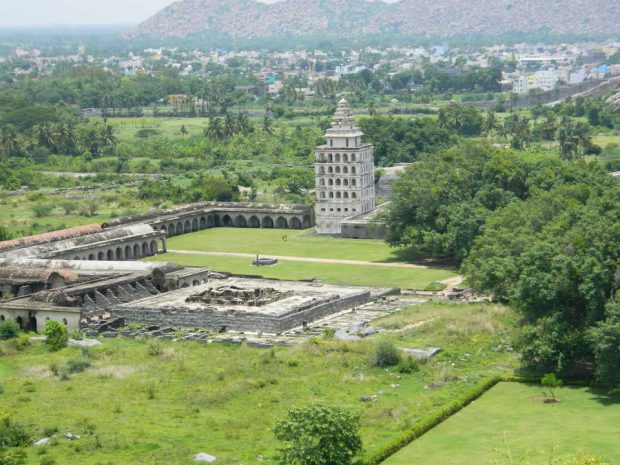Gingee Fort History
Gingee Fort
Gingee Fort is one of the surviving forts in India, located in Chennai and is also famous as Senji Fort. The Fort is placed in Villupuram District, which is 160 kilometres away from Chennai. During the Maratha Kingdom period, Chhatrapati Shivaji preferred the Fort and ranked it the most impregnable Fort. The British called the Fort the ‘Troy of the East’.
Gingee Fort History

During the 9th century, the Chola kings built a small fort that Kurumbar modified. Kurumbar declared himself an Independent king and fought against the Cholas. Later, the Kurumbar king fought with Vijayanagar Empire during the 13th century. When Vijayanagara Empire occupied the Fort, the Nayakas, the lieutenants of the Vijayanagara Empire, extended the Fort in a wide range. Later the Nayaks became an Independent king and ruled his kingdom by making the Fort the prime protecting area when Chhatrapati Shivaji Maharaj founded the Marata Empire and expanded the kingdom in all directions.
Then he thought about the importance and strategic place of the Gingee Fort and decided to conquer it. Hence, the Marata Empire conquered the Fort under the leadership of Shivaji in 1677 AD. Later in 1691 AD, the Mughal Emperor Aurangzeb sent his general Zul Fikar Khan to occupy the Fort and succeeded in capturing the Marathas. However, the local king Santaji Ghorpade defended the Mughal Empire and followed to protect the Fort again, not going into the enemies. Later, the Fort passed into the hands of Carnatic Nawabs and was lost to the French in 1750 AD. Finally, the British took it under their control in 1761.
Gingee Fort Hill view from the road
The Gingee Fort is located on and around three hillocks. We can see Rajagiri to the west, Krishnagiri to the North and Chandrayandurg to the Southeast. The fort walls are very long, 13 km and the hills are connected with high walls. The main Fort is at the height of 800 feet with many magnificent monuments. We can see a seven-storeyed marriage hall, prison cells for culprits and a beautiful temple dedicated to Goddess Chenjiamman. At present, the Archaeological Survey of India administrates the Fort and opens it for the public to amuse with the Fort’s history.